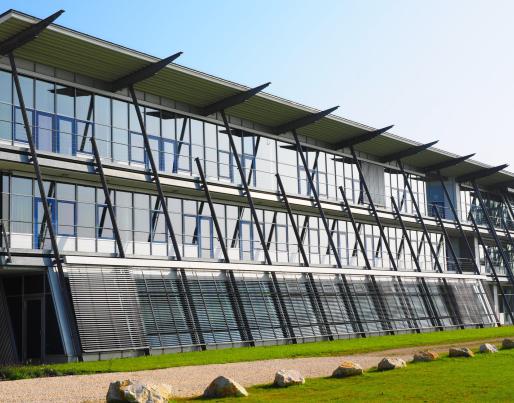OVERVIEW | Zero-Energy Buildings: does the definition influence their design and implementation?

OVERVIEW | Zero-Energy Buildings: does the definition influence their design and implementation?
In the recast Energy Performance of Buildings Directive (EPBD, 2010/31/EU), the term Nearly Zero-Energy Building (commonly abbreviated as NZEB) was introduced and defined as a “building that has a very high energy performance… the nearly zero or very low amount of energy required should be covered to a very significant extent by energy from renewable sources, including energy from renewable sources produced on-site or nearby” (Art. 2). The Directive states that, from January 2019 for public buildings and January 2021 for others, all newbuild construction should reach the target NZEB as defined at the national level. Article 9 of the EPBD goes on to require Member States to not only set a national standard for NZEB but also to actively promote a higher market uptake of such buildings.
The debate around the definition of NZEB crosses EU boundaries and involves the international technical and scientific community. Several EU and extra EU governments have established ambitious policies and targets for zero-energy buildings (ZEBs) to become standard or commonplace. A range of terms are used to describe these very low energy buildings, including: zero energy building, nearly zero energy building, net zero energy, zero carbon, zero energy, zero net carbon, and zero net energy. Despite the slight difference in names, these buildings are all aiming for zero-energy consumption or emissions. In addition, whatever energy is consumed within the building will be offset by renewable sources, usually on-site. Unfortunately, because the initiatives have different definitions of the zero metric, and different energy consumption and production boundaries, direct comparison between the schemes is problematic.
To understand the energy performance of high energy performance buildings, it is essential to establish the factors that make a difference at the design and construction phases and during the entire building life cycle, such as:
-boundaries for energy use: the definitions of regulated energy, or the end-uses that are included or excluded in the total energy consumption vary across different policies. Nearly all European standards and definitions exclude plug loads from the building energy needs calculated as these loads are not permanent in the building structure. Other standards and energy accounting systems include all the energy consumed within a building; these methodologies usually consider the energy consumption of the whole building. There are also differences between what are considered appropriate on-site renewable energy systems to offset energy consumption. All EU Member State calculations allow for a relatively small number of solutions, such as solar thermal panels for domestic hot water or heating support, photovoltaics for self-use, biomass boilers and some types of heat pumps;
-energy use and/or consumption: while most NZEB definitions consider only the energy used and generated over the course of a year, some regions, such as the US state of California, with rapidly growing ZEB markets, including solar PV, have introduced time dependency as a significant factor to be evaluated. This enables an additional benefit from on-site renewable energy systems during peak demand in a neighbourhood or utility distribution network;
-the selection of metrics: some ZEB definitions use zero carbon as opposed to zero energy. The two metrics require significant additional research and quantitative analysis to understand their different impacts and the interactions between energy and carbon.
Initiatives concerning ZEBs and NZEBs are growing worldwide. Beyond the EU, a large number of institutions and not-for--profit organisations aim to accelerate the transition toward a fully decarbonised building stock, as demonstrated by Advancing Net Zero by the World Green Building Council, Architecture 2030, the Living Building Challenge, C40 Cities Climate Leadership Group, the Getting to Zero National Forum and the Net Zero Energy Coalition. The Clean Energy Ministerial has developed a ‘NZEB campaign’ co-led by France and the European Commission, in coalition with the Global Alliance for Buildings and Construction (GABC), the United Nations Environment Programme (UNEP), the International Energy Agency (IEA), the International Partnership for Energy Efficiency Cooperation (IPEEC), and the World Resources Institute. The campaign aims to advance policies, investments and information exchange in support of NZEBs worldwide, meeting the commitments of the Paris Agreement through national contributions, developing a low-carbon or near-zero-energy buildings industry in each country, and ensuring that NZEB becomes a priority for new building construction and building renovation in those countries participating or represented in the coalition.
At the EU level, significant experience has been gained from the EPBD Concerned Action initiative, supported by the European Commission via the Horizon 2020 programme and the previous Intelligent Energy Europe (IEE) programme. The CA (Concerted Action) EPBD is a forum where national authorities from the EU and Norway can exchange information on the effective implementation of the Directive. The CA EPBD IV (October 2015 to March 2018) aimed to transpose and implement the EPBD recast, Directive 2010/31/EU. It was organised around meetings between national teams, often bringing together more than 120 participants from 29 countries. The CA EPBD initiative, including also measures to enhance communication, such as a web platform and national reports, has provided overviews of NZEB implementation across Europe, best practices for both new buildings and renovations, and the experience gained on NZEBs to date. A recent report summarises the main outcomes of the work of the CA EPBD under the central New Buildings & NZEBs team and presents an analysis of the different national applications of the NZEB definition, the integration of renewable energy systems in urban NZEBs, and the innovative technologies and system solutions and their impact on indoor comfort.
One of the IEE-funded projects which explored NZEB was ZEBRA2020; it ended in 2016 and produced important results:
-an online data tool providing unique information regarding NZEB market development, NZEB characteristics, and an online NZEB tracker based on a set of criteria that assesses the NZEB market maturity and visualises the national NZEB markets dynamically. The tracker has shown a substantial gap in market maturity which has until 2019/2021 before closure;
-two common aspects which hinder the full development of NZEB construction market maturity and go beyond national differences are the lack of professional knowledge and financing schemes. On one hand, there is a need for economic incentives and pilot programmes to drive the market transition to NZEBs, while on the other, a lack of professional knowledge and experience was identified. Most of the countries examined in the project pointed out obstacles to the dissemination of innovative energy-saving technical solutions among designers and construction professionals, as well as a general lack of knowledge.
To address these issues, the H2020 project PROF/TRAC looked at the need to define and map NZEB skills in a harmonised way across work sectors. The qualification scheme lists the essential technologies and skills required for professionals dealing with NZEB, categorised in the following areas of expertise: energy management, energy production, energy reduction, and interdisciplinary skills. The specific competences, referred to as qualifications, describe in more detail the required knowledge, skills and behaviour of an NZEB professional. The project also provides a unique repository of relevant training materials and national training organisations and experts who have successfully completed the training modules. In November 2017, BUILD UP hosted a PROF/TRAC webinar to explain the project and its outcomes; the recordings are available on the portal.
To help key stakeholders gain a better understanding of the benefits of NZEB, and to identify innovative financial schemes and cost-effective solutions for the renovation and construction of public buildings, the INTERREG Central Europe eCentral Project has explored a range of selected and relevant pan-European NZEB initiatives. The project aims to cross the common barrier of limited financial capacity for new NZEBs and renovations. Innovative financial schemes are being developed and tested as a key factor for successful projects.
Encouraging new construction as well as major and deep renovations that strive to attain the NZEB levels of performance is crucial to reaching the decarbonised building stock scenario.
Unfortunately, this goal is still a long way off. The online data tool developed by the ZEBRA2020 project highlights a wide but positive range of results on the share of new dwellings built according to national NZEB definitions (or better than NZEB) in 2014 – ranging from 100% in France to 1.1% in the United Kingdom. The critical aspect is the annual stock undergoing significant renovation in the residential sector: the available national data, even if only partial, highlight a percentage variable from 0.1 to 2.81%. However, this is a too tiny fraction of the 24 billion m2 of European building stock. The Paris Agreement demands a more ambitious built environment strategy!


